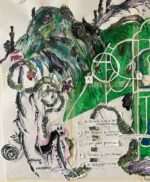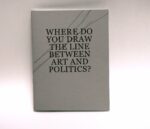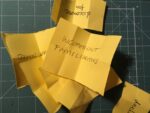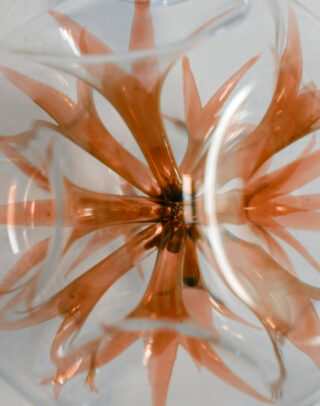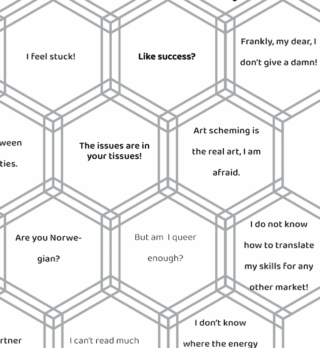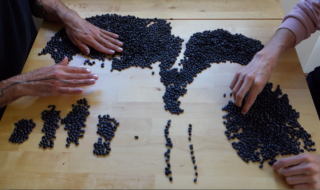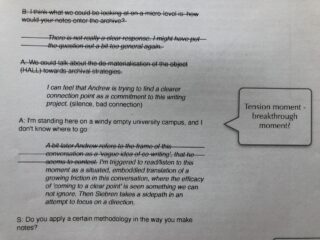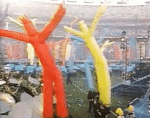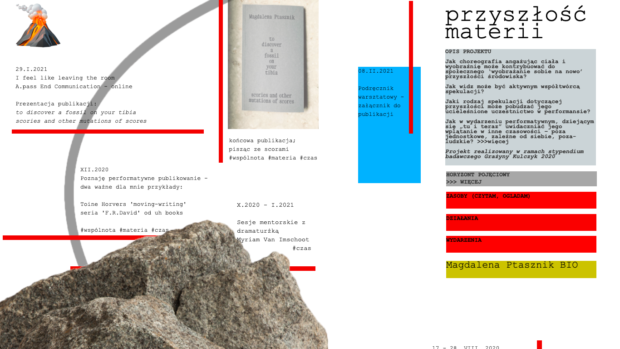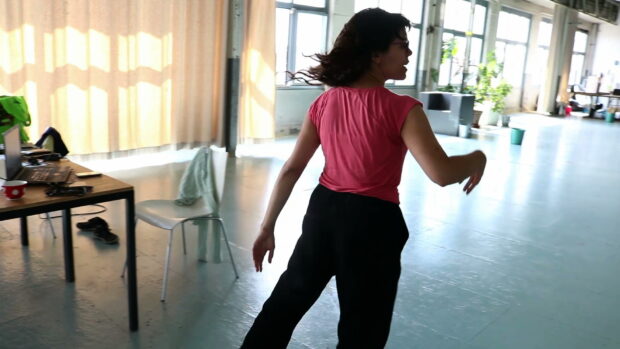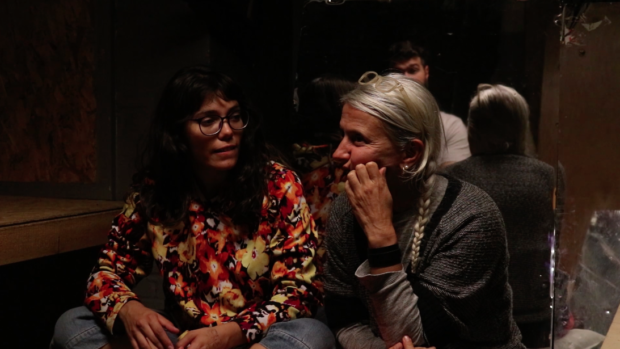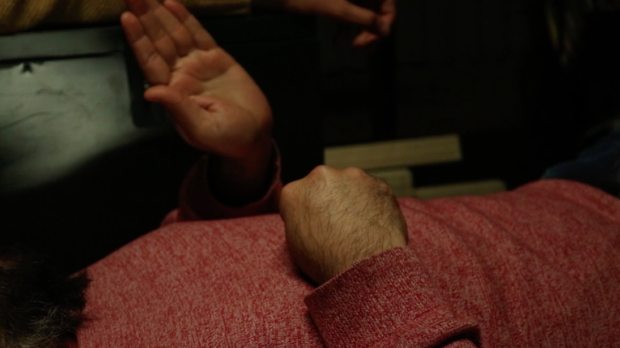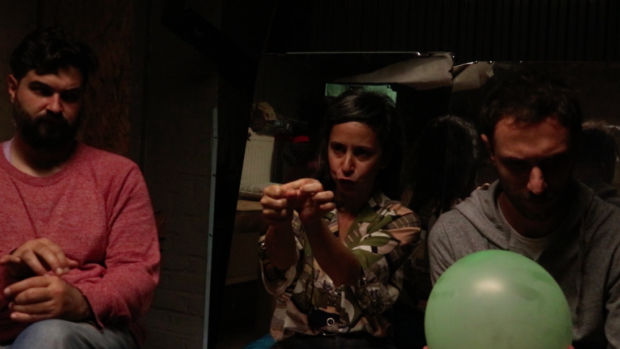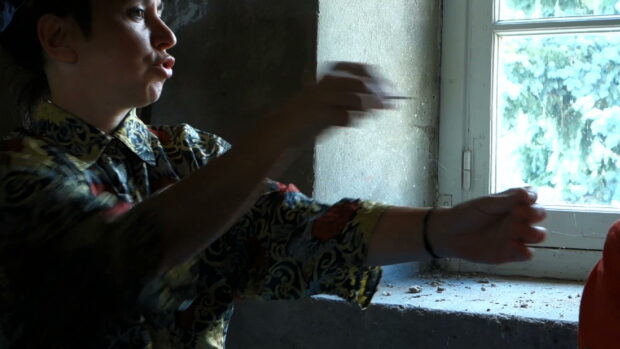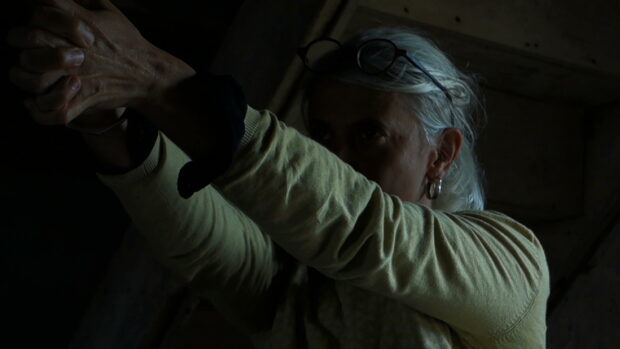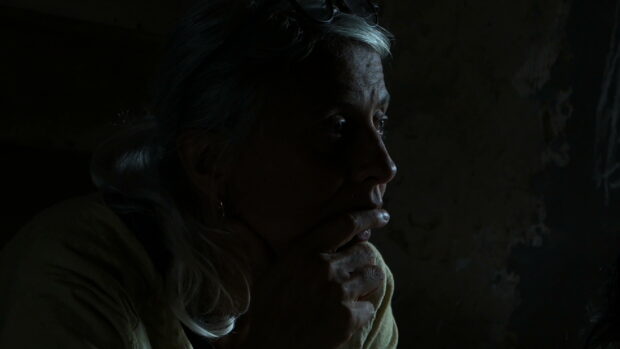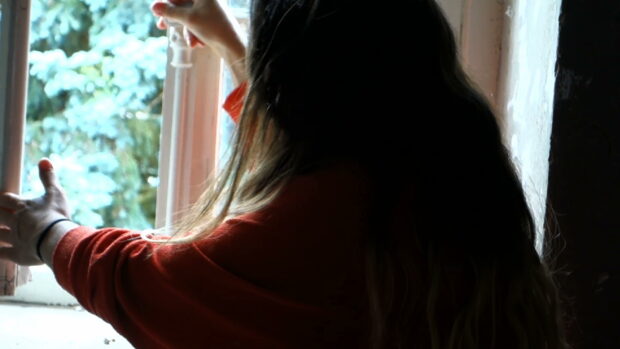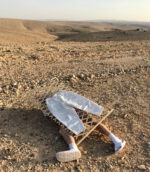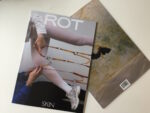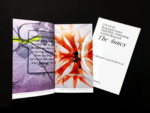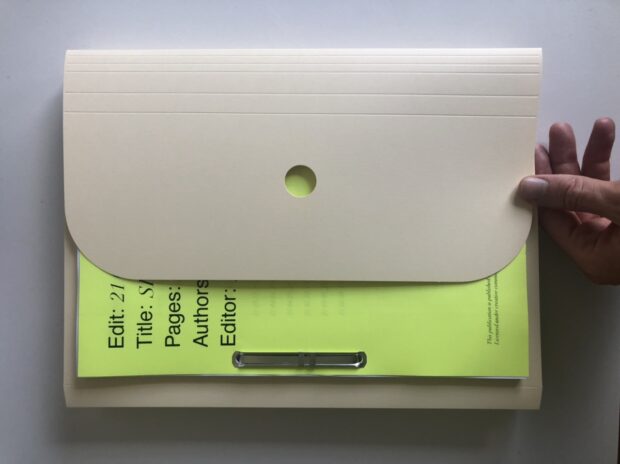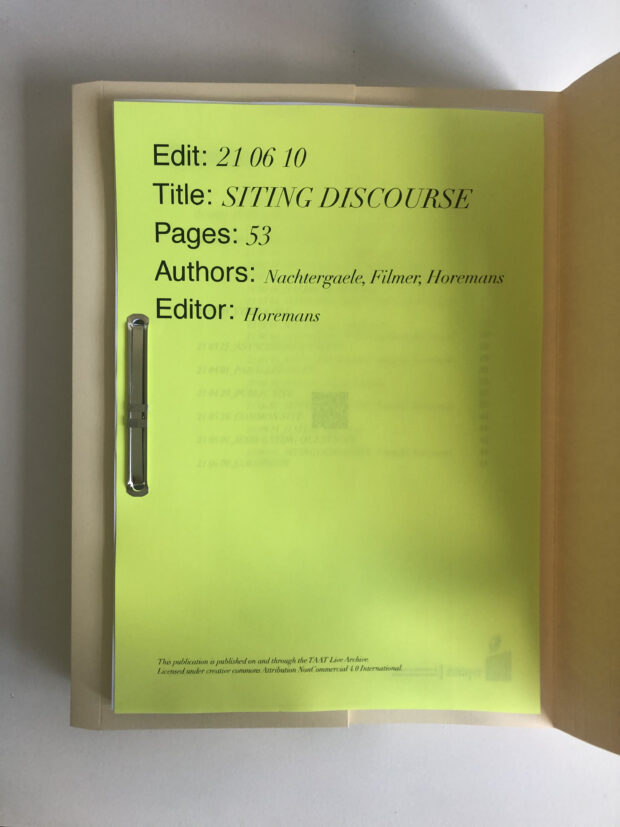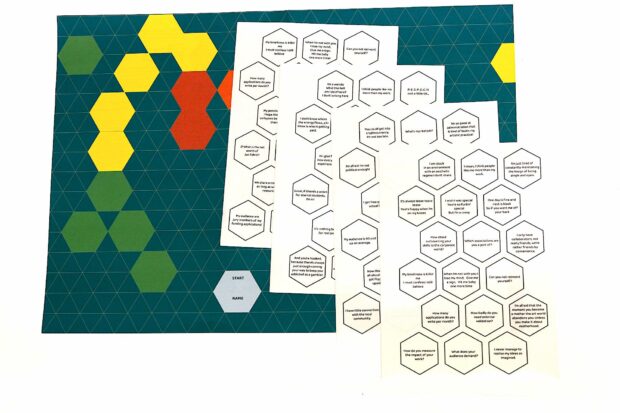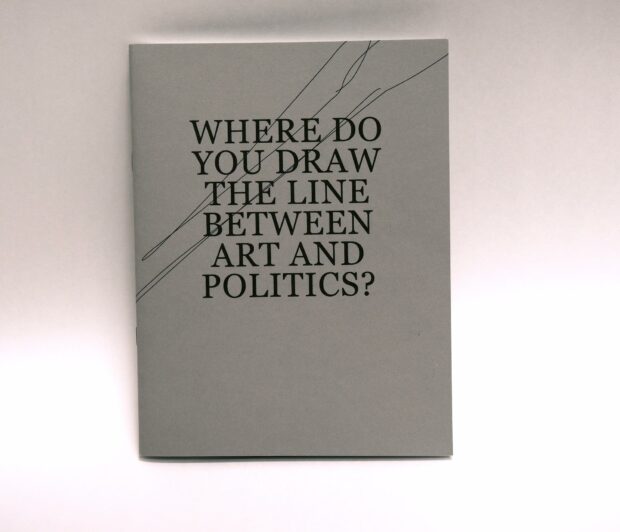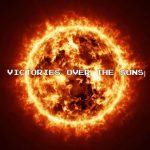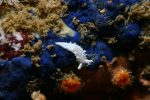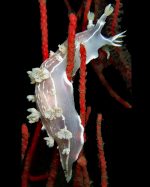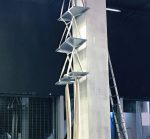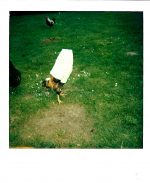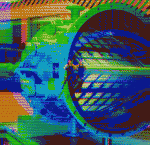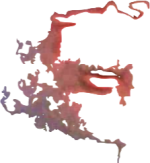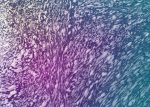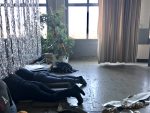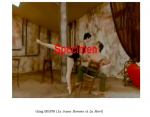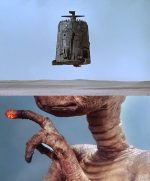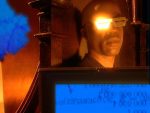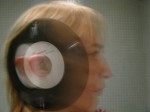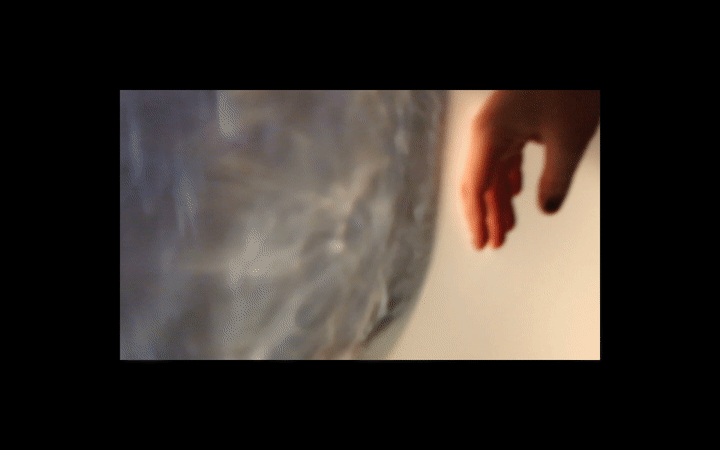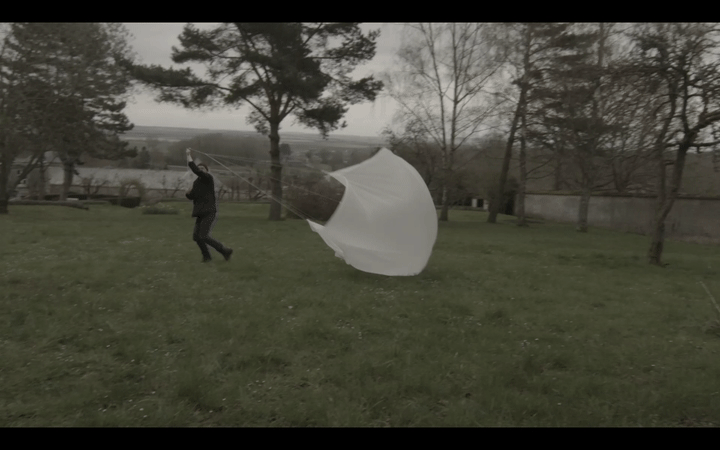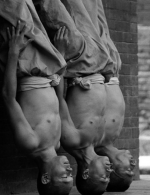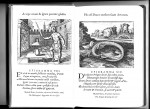1. TEXT FROM THE PUBLICATION OF THE END COMMUNICATIONS OF SEPTEMBER 2018
The Who Are You Talking To Talk Show / Geert Vaes
Kiosk @ Elizabeth Park
14/09/18 and 15/09/18 at 18:00 and 22:00, 16/09 at 18:00 and 20:00
'You are invited to be a guest and/or audience member at The Who Are You Talking To Talk Show.
A talk show where we all will try to playfully disappear and grow closer. So who will you be? And who will you be talking to?'
'U bent uitgenodigd als gast en/of publiek van The Who Are You Talking To Talk Show. Een talkshow waar we zullen proberen om spelenderwijs te verdwijnen en elkaar beter te leren kennen. Dus, wie zal je zijn? En met wie zal je praten?'
أنت مدعو لتكون ضيفًا و / أو عضوًا في جمهور برنامج "من هو الذي تتحدث إليه”.
برنامج حواري سنحاول من خلاله جميعاً أن نختفي بشكل هزلي. فمن ستكون؟ ومن هو الذي سوف تتحدث إليه؟
'Vous êtes invités à participer et/ou à assister au talk show :'Avec qui parlez-vous?'. Une conversation-performance où nous essaierons tous de nous amuser à disparaître. Alors, quel rôle jouerez-vous? Et avec qui allez-vous parler vraiment?'
THE WHO ARE YOU TALKING TO TALK SHOW

‘Everything is Fiction.’
It was 1980-something. I was a kid and I used the meadow at the back of our house as a playground. We kept chickens, goats, sometimes a sheep or two and Fik, the donkey.
These pictures are taken after the rooster got stuck in a bread bag. After I saw him doing it for the first time, I made sure to always bring empty bread bags for him. I knew he would put his head in them, peck away at the remaining crumbs and eventually become so eager for more that he would get stuck until I would come to his rescue.
The rooster didn’t know he was putting on a mask. Disappearing. Changing form. Shapeshifting into a creature that is half white bag, half a rooster’s bum and legs. By wearing the bag he draws attention, becomes something out of the ordinary. By showing less of his rooster-ness, he became more interesting to me. My aim as a performer has always been disappearing, going beyond the ‘I’, stepping into the unknown without knowing what will be the result of the exercise. The mask is a supreme way of vanishing and coming out the other end as more than I could possibly imagine.
Putting on a bag is also a way of surrendering to the unknown. The rooster gets lured in by the promise of more crumbs. I get lured in by the promise of a heightened state of play. The rooster’s eagerness for food is my eagerness for play. The mask becomes the stage. The mask doesn’t need the physical space called theatre. The mask is the theatre. The false face is the battlefield and the playground where sense, nonsense and no sense fight for attention. Inside and outside the mask a sense of excitement and freedom reigns. The mask destabilizes the wearer and the observer. The rooster on the picture is obviously lost and doesn’t know up from down (he always needed to be rescued), and I, the observer, would always be mesmerized by the absurdity of the situation.
I use the mask to disappear. And I invite you, the public, to also disappear. To become part of the process and to flow with whatever is being presented, to let ‘something else, something unspoken and unspeakable’ take over. I feel the need to explore the space between you and I. This space is the meeting point, the place where sharing occurs.
I thrive on improvisation. This doesn’t mean that anything goes, though. It’s all about adopting a mindset that wants to shed the walls of the practice, make visible the mechanics and lay bare the inner and outer workings of the process.
Wittgenstein once wrote an allegory where he describes mankind as living under a red glass bell. There are three ways of dealing with this, he says. One way is represented by people who are oblivious to the fact that they are living under a red glass bell, they see everything is red and go about their lives without thinking about it. Then there are people who realize that something is not completely right, they investigate and get close to the glass where they can touch the bell, but instead of doing something with this new knowledge they return to the middle and go about their lives. According to Wittgenstein, these people tend to become humorous or melancholic. Finally, there’s a third kind: the ones who try to break through the glass bell and aspire to see the actual light without the interference of the red glass.
I ‘d like to invite you to take a stroll outside the glass bell with me. Hoping you might start to notice that what we call ‘I’ is a story. What we call ‘history’ is a story. What we call the world, a country, who we are, where we are,... are collections of stories.
Note to self: These words I am writing (the same ones you are reading) are similarly building blocks of yet another story I tell myself (and you).
I want to be your tour guide, to unmask the collection of narratives we surround yourselves with. What you do next, is up to you. You are free to ignore everything, to build a house at the edge, to try to break through or to go back to the middle and become a melancholic.
In stating that everything is fiction, I also state that everything we are constantly doing is staging our own drama’s, comedies, thrillers… The notable mister Shakespeare observed it quite strikingly: ‘The world’s a stage, and each must play a part’.
Using theatrical tools in non-theatrical situations alongside deconstructing or extrapolating ‘the theatrical’ has always fascinated me. Using performance as a tool to try to create awareness about our personal and societal conditioning (the grabbag of narratives) is very important to me. The theatrical is the place where I can investigate and work with the narratives, those given to us and the ones we create ourselves through an unending process of copy-pasting. I discovered that the theatre has the potential to show me my dependence on these narratives. That’s why I love to inject the fictional into the real without saying what is real and what isn’t. It is disrupting the logic of the stories we tell ourselves. Taking the character out of the play stirs something essential in people: their obsession with believing and disbelieving and their fears around sanity and insanity.
There’s a story I once heard where a man visits his friend in the insane asylum. When the friend asks how are you, the man says: ‘Great! You see these walls here? They protect me from the crazy people outside. You should try to get in too, so you’ll be protected from the madness on the outside.’ Inside the mask, it feels more easy to see the fiction on the outside. I am very inspired by what the Situationists, the Dadaists or comedy genius Andy Kaufman did. They were all busy trying to make cracks in the ruling narrative. I think Andy Kaufman put it very, very well:
What’s real? What’s not? That’s what I do in my act. Test how other people deal with reality.
Yes, theatre is magic. For when I walk into a room as a character, the room changes. My reality changes but yours is also changing because you have only two options: you are playing along or you aren’t.
It all comes down to giving and taking. And this only becomes possible when there’s a willingness from both parties (you and me) to engage and discover together. What’s required is openness, an attitude of trust and the willingness to spend some time together in order to be inspired, entertained, taught, surprised,...
Participation is all about one pair of eyes looking straight into another pair of eyes sharing that moment of recognition. After all is said and done, the most important thing is other people (you!). And the closest I can get to you is by looking into your eyes. Especially when I look through the eyes of the mask. And this can be scary.
When I put on a mask I take a risk, when I ask you to wear a mask I ask you to take a risk. The risk is to tread unknown ground. Inside the mask I may feel like an impostor, I may feel like other people know something’s wrong, I may feel like I’m losing control. When I put on a mask my senses heighten. It is impossible to sleepwalk because everything is different. This may cause excitement or fear. I am seen differently by others. The people I know don’t recognize me. My dog barks at me. I start to interact very differently with my surroundings but also with myself. When I wore my old man mask for the first time I noticed young people didn’t see me. The only eye contact I could make was with other old people. The world changed, people bumped into me. I became invisible for most and all of a sudden of interest to others. It changed my perspective on my surroundings but also on myself. I became another so to speak. When I change physically, the world and my place in it changes, and the way I participate in it too. I suddenly find myself venturing into a liberating state of play. And I believe playing together is one of the highest forms of contact we can achieve.
So, could I ask you now to pretend to be a rooster?
References
Swami Premodaya (Satsang, ‘You experience what you expect to experience.’, ‘Your perceptions are your limitations.’), Swami Prem Prasad (‘Freedom through De-Conditioning’), OSHO (‘The Path of the Mystic’), Meher Baba, Adrian Piper (‘Ideology, Confrontation and Political Self-Awareness’), Stuart Price (‘I’m lost in the space between the concept and the execution’, ‘I’m stuck in the void between the instinct and the institution’), Ludwig Wittgenstein (‘Licht en schaduw: een droom en een brief over religie.’), Martin Buber (‘I and Thou’), Caroline Astell-Burt (‘I am the story’), Robert J. Landy (‘Persona and Performance’), Luigi Pirandello, Hannah Arendt (‘Lying in Politics’), Sören Kierkegaard (‘...the jump into the absurd...’), Codrescu (The Posthuman Dada Guide), Robert Crichton (‘The Great Impostor’), Ferdinand Waldo Demara, Eli Jaxon-Bear (‘Sudden Awakening’), Andy Kaufman, Bourdieu (‘Identity is given, not created’), Antonio Gramsci, Stuart Hall, one man continuously calling me ‘Christophe’ in Morocco and my irritation with that, Rabia of Basra, Artaud, Frantz Fanon (‘Black Skin, White Masks’), Reni Eddo-Lodge (‘Why I’m no longer talking to white people about race’), Nassim Taleb (‘Antifragile’), James Baldwin (‘The Fire Next Time’), John Cage (‘Silence’), Lou Reed’s rendition of ‘This Magic Moment’, Tommy Maitland, Mike Myers, The Gong Show, Sarah Paulson, Kokoroko, Fanna-Fi-Allah, The Little Flowers of Saint Francis, Anandamayi Ma, Gangaji (‘Hidden Treasure’), RuPaul’s Drag Race, Tony Clifton, Charles Aznavour, Lilia Mestre, Vladimir Miller, Pierre Rubio, Nicolas Galeazzi, Philippine Hoegen, Peggy Pierrot, Kate Rich, Geert Opsomer, Sara Manente, Heike Langsdorf, Sina Seifee, Michael Sugich (‘Signs on the Horizons’), Abdelwahab Meddeb (‘Instants soufis’), Ranchor Prime (‘The Birth of Kirtan’), Shomari Dev, Loka Dev, Jai Dev
2. TEXT OF THE PORTFOLIO
EVERYTHING IS FICTION

12 MUSINGS ABOUT MY RESEARCH
Geert Vaes
a.pass end communications
(September 2017 - September 2018)
“You, I and It walk into the World. I love to get close to You, I love to know You. You love to get close to I. You love to know I.
I see You. I recognize You. I approach You. You don’t recognize I. Because I am wearing It. You tell It You are waiting for I. It starts a conversation with You. You show I another side of You because You are not talking to I but to It.
It shows I You. I tell You I was using It to learn to know You. I lend You It to let me know You more too. We use It to get closer. It makes I love You and You love I. It creates US.”
From the writing workshop with Peter Stamer in Block I (Vladimir Miller): ‘Your research told as a joke’
- The Rooster and the Bread Bag

It was 1980-something. I was a kid and used the meadow at the back of our house as a playground. We kept chickens, goats, sometimes a sheep or two and Fik, the donkey.
This picture is taken after the rooster got stuck in a bread bag. After seeing him doing it once I made sure to bring the empty bread bags for him. I knew he would get his head in, peck away at the remaining crumbs and eventually become so eager for more that he would get stuck until I would come to his rescue.
The rooster didn’t know he was putting on a mask. Disappearing. Changing form. Shapeshifting into a creature that is half white bag, half a rooster’s bum and legs. By having the bag on he draws attention, becomes something out of the ordinary. By showing less of his rooster-ness, he becomes of more interest to the observer, in this case, me. My aim as a performer has always been disappearing, going beyond the ‘I’, stepping into the unknown without knowing what will be the result of this exercise. The mask is a supreme way of vanishing and coming out the other end as more than I can possibly imagine.
Putting on a bag is also a way of surrendering to the unknown. The rooster gets lured in by the promise of more crumbs. I get lured in by the promise of a heightened state of play. The rooster’s eagerness for food is my eagerness for play. The mask becomes the stage. The mask doesn’t need the physical space called theatre. The mask is the theatre. The false face is the battlefield and playground where sense, nonsense and no sense fight for attention. Inside and outside the mask a sense of excitement and freedom reigns. The mask destabilizes the wearer and the observer, as is the case with the rooster. He is obviously lost and doesn’t know up from down (he always needed to be rescued), and I the observer would always be mesmerized by the absurdity of the situation. My interest in masking and disappearing awakened.
‘The mask as a tool of awareness. The proposed research aims to investigate how hyper-realistic silicone spfx-masks can be used as tools of awareness to shed more light on race, gender and class issues in an experiential, sensual and non-mental way. How to help performers and non-performers create another persona and let them experience how it feels to literally be in somebody else’s skin, wearing another one’s face in non-theatrical daily situations. How does this change their perspectives? Or doesn’t it change anything? How does this, in a broader sense, affect the notions of ‚I’ and ‚You’? How does it affect one’s outlook on one’s own community, conditioning, and beliefs?’
This is the first paragraph of the research proposal I sent to a.pass in May 2017.
Some of the questions I had, deepened and became richer, others faded into the background.
What seems to be at the heart of the research is that I invite you to look through a different lens. And while looking through this lens, maybe you will see that everything is a construction of stories. What we call ‘I’ is a story. What we call ‘history’ is a story. What we call the world, a country, who we are, where we are,... It’s all a collection of stories. Our lives are collections of stories we build upon. These stories crystalize into the more or less cohesive narrative called ‘I’.
So, we are surrounded by narratives, constructions, stories. We create them ourselves, they are created for us, we copy paste, add personal touches. We are inevitably moving through a narrative minefield: history, science, religion, countries, economics, politics, philosophy, love, you’s and I’s,... Narratives are given to us but we actively rearrange them through an unending process of copy-pasting. We are all very creative in writing our own scripts, fitting our scripts into the bigger narrative, creating a dazzling array of storylines upon storylines.
As a child, like many children, I was often busy dressing up as someone else, to the delight of my mother who would always be ready to take pictures. In creating other personas I found a way out of the narrative I was inhabiting. Later came my calling to study theatre and I became an actor and performer. Revisiting these pictures I realized: ‘I have been doing this since forever...’. What initially was just a very naive reflex: putting on clothes that were not mine and playacting and believing I was someone else, turned into a profession. I found the safe haven for transformation in the theatre. Later I started to take this urge to transform to the street, and in doing this I noticed the street transformed as well. By bringing the theatrical reflex into the street, the street becomes another character. In using this theatrical tool I hope to pierce through the veils knit together by the narratives surrounding us, and in doing so create more awareness.
Wittgenstein once wrote an allegory where he describes mankind as living under a red glass bell. There are three ways of dealing with this, he says. One way is represented by people who are oblivious to the fact that they are living under a red glass bell, they see everything is red and go about their lives without thinking about it. Then there are people who realize that something is not completely right, they investigate and get close to the glass where they can touch the bell, but instead of doing something with this new knowledge they return to the middle and go about their lives. According to Wittgenstein, these people tend to become humorous or melancholic. Finally, there’s a third kind: the ones who try to break through the glass bell and aspire to see the actual light without the interference of the red glass.
Wittgenstein’s allegory is related to Plato’s Cave. Plenty of similar allegorical examples can be found in mystical texts throughout the ages. What these metaphors and allegories all point at is that there is the possibility to look through the story, the mold, the mask. Using masks gives us the potential to become more aware of the multitude of masks and stories we surround ourselves with. Becoming aware of this we can generate more choices for ourselves. By using masks as tools we can address our biases and judgments and are able to reveal society's. With masks, we perform in the unconscious field of signs. We briefly are able to lose control and to step beyond our ideas of limitation.
We all are master storytellers and interpreters. As long as we are all believers in all the narrative constructions surrounding us, we are doomed to live as characters in the fairytales we construct for ourselves and others. ‘The world’s a stage, each must play its part’ is a very striking observation of how we live.
- The Seemingly Empty Stage

It’s 1980-something and this was my first ever performance. I am not visible. But I know I was there. The picture shows some audience member’s arms moving at the music. I am singing ‘We Are The World’ and attempting to do all the different voices (Willie Nelson, Michael Jackson, Stevie Wonder, Lionel Richie, Paul Simon, Kenny Rogers, Tina Turner, Billy Joel, Dion Warwick, Cyndi Lauper, Diana Ross, Bruce Springsteen, Al Jarreau, Huey Lewis, Linda Ronstadt, Bob Dylan, Ray Charles,...). I am very shy and I feel I’m turning completely red, but the fun of using different voices somehow pulls me through. It makes perfect sense I am not in the picture. It was another exercise in disappearing. The stage is the place for the performer to disappear and step out of her/his skin and turn into something more real than he or she could ever be. The audience is also not visible. The audience’s role is similar to that of the performer. Each member of the audience sheds its bag of flesh and bones and becomes part of The Play.
My medium is theatre. I literally see everything as theatre. I think in terms of actors and audience, on stage and off stage, playing, rehearsing, improvising,... In stating that everything is fiction, I also state that everything we are constantly doing is staging our own drama’s, comedies, thrillers, musicals,... Everything is theatre. Therefore I like to infuse ‘reality’ with even more theatrical elements. Introducing a fictional character into the world but not telling he/she is fictional opens up lots of potentials to show the theatricality of the real. The theatre is a safe place when it does its work in the theatre space, but whenever theatre breaks out of the walls, then its potential becomes more dangerous, more subversive, more disruptive.
Using theatrical tools in non-theatrical situations alongside deconstructing or extrapolating ‘the theatrical’ has always fascinated me. Using performance as a tool to try to create awareness about our personal and societal conditioning (the grabbag of narratives) is very important to me. The theatrical is the place where I can investigate and work with the narratives, those given to us and the ones we create ourselves through an unending process of copy-pasting. I discovered that the theatre has the potential to show me my dependence on these narratives. That’s why I love to inject the fictional into the real without saying what is real and what isn’t. It is disrupting the logic of the stories we tell ourselves. Taking the character out of the play stirs something essential in people: their obsession with believing and disbelieving and their fears around sanity and insanity.
There’s a story I once heard where a man visits his friend in the insane asylum. When the friend asks how are you, the man says: ‘Great! You see these walls here? They protect me from the crazy people outside. You should try to get in too, so you’ll be protected from the madness on the outside.’ Inside the mask, it feels more easy to see the fiction on the outside. I am very inspired by what the Situationists, the Dadaists or comedy genius Andy Kaufman did. They were all busy trying to make cracks in the ruling narrative. I think Andy Kaufman put it very, very well:
What’s real? What’s not? That’s what I do in my act, test how other people deal with reality.
- My beloved grandmother Marie, the playground and a little clown.

It’s 1980 something and it’s the day to celebrate carnival. Mimi (Marie) is posing with me. I am dressed like a Native American although the hat and nose are confusing the image a bit. I am pretty sure this picture was taken before or after the yearly school kids’ parade through the village. When talking about masking and disappearing and reappearing it is impossible not to talk about Carnival, the time of the year where it is allowed to change at will, to put down the burden called ‘you’ or ‘I’. We are all fools playing the fool’s games. And carnival makes us aware of this. The parade is an outside stage in the street. Streets are generally not safe havens for performance or theatre but the group aspect of a parade turns it again into a safe space allowing the inner playfulness to come out.
During my year in a.pass I held my experiments back and forth between the safe (inside the building of a.pass, the ‘4th Floor’, and with fellow a.passees) and the riskful (outside a.pass, in the street, with the people occupying the street at that particular moment in time). It became an important part of my research in a.pass. I learned to understand more the difference between IN and OUT. Inside the mask, outside the mask. Inside the safe haven (‘theatre space’), outside in the great wide open (no literal ‘theatre space’). Me inside my propositions, out of them or in and out of them. The dynamics change radically when I allow myself to be a player in my own frame, or when I am instigating and holding space for others to play. I am always searching for ways to let people participate. So when I started working with masks, besides the joy of me putting them on and playing with them, I also felt the urge to share the mask. To let the audience also experience the inside of the mask, to let them look through the eyes of the mask. The first time I realized this could work was with a presentation I held during the Halfway Days in my second block (curated by Nicolas Galeazzi). I created a small TV studio with a score. Two persons: one puts on a mask and different clothes, and in doing so turns into the character called Johannes Bouma, the other person asks questions to Johannes about the research of the actual person wearing the mask of Johannes. Everything is recorded by a camera placed in front. Here, for the first time, the mask started to work as a tool of awareness. People who normally weren’t very good at talking about their own work, were very clear talking about themselves and their work (as Johannes). Others started to realize things about their work in relation to the public. They started to relate differently to themselves and to the person questioning them. The mask mirrored, mimicked and magnified the person and his/her research.
- The Farmer and the Widow


.
It was 1980-something and I probably wanted to feel the rush of disguising again… These pictures are all about a Flanders and its rural identity. Rural Flanders where my ancestors all come from. I am only the 2nd generation non-farmer. In these pictures, there’s clear evidence of remnants of ‘peasantry’. The traditional stove, the ‘fermette’ (a type of house that became in fashion again in the 80’s when people started to build new houses to look like old farms). These ‘fermettes’ are masks of what once was. The figures I portray are also molds from the past catapulted into that present moment when the picture was taken. I embodied my ancestors. The widow is my great-grandmother who I only know through pictures. The farmer could represent either of my grandfathers.
During Block I (Vladimir Miller), when we were asked to prepare an excursion for the Halfway Days, I focused on my own personal flemish identity by visiting an amateur company rehearsing ‘Het Gezin Van Paemel’. This is the invitation I sent:
'Het Gezin Van Paemel' (The Family Van Paemel) by Cyriel Buysse is a 114-year old theatre piece that's still showing the flemish what it means to be Flemish. The excursion will bring us to an amateur theatre company rehearsing the piece. Why are they, and with them, lots of other amateur companies, still so interested in this piece? Why am I? My questioning will be mainly about one scene in particular: the son who goes to tell his father he's leaving for America. An America he only knows through stories, an America that personifies a better life. How is this flemish identity created (the I) by the staying and the leaving? And how is America (the other) created? And isn't all emigrating originating in the America of the soul? How is this construction of I a mask/conditioning? How is history as a re-construction keeping in place all these notions? How will I go from here to using masks again? How will I finally get out of Flanders?
I made a detour from literal masking to the metaphorical mask, in this case: a theatre piece. The piece was first written and produced in 1903. Since then it has become a standard in Flemish theatre, and mainly in amateur theatre. It has been performed continuously since the first performance up until now. The piece is a Flemish classic. It portrays peasant life in 19th century Flanders and still now the piece is revered as a flemish icon. It is a naturalistic piece narrating the misery and heroism of a peasant family: the poor ‘pater familias’ and his obedient wife, one son got crippled because the baron’s son accidentally shot him, one daughter is more Catholic than the pope, another one is made pregnant by the baron’s son, another son has to join the army and shoot at the socialists, yet another son is a socialist,... My excursion took us to Tielen, a small village in the province of Antwerp, in the region called ‘De Kempen’, a provincial, rural area. The local company ‘Tejater De Orchidee’ was rehearsing their version of the piece and I was interested in how and why they made this flemish classic. We were allowed to come and watch the rehearsals and talk with the cast and the director.
The piece was significant to me because of its resonance. I remembered as a kid watching the movie they made after the theatre piece. There’s one iconic scene at the end of the movie when the oldest son goes to visit his father and says: ‘Father, I’m going to America.’ He invites his parents to go with him, to go for a better life. But the father is stubborn and tells the son he will not leave the ground his ancestors are buried in. This piece is all about identity and roots and therefore it has been performed again and again to flemish audiences. It holds up a mirror of heroism, and ‘we always overcome hardship because us, Flemish, we work and work and work’. I was wondering how much this piece still influences the ‘flemish identity’. I never really understood what that meant. ‘Het Gezin Van Paemel’ has helped and is helping to construct this narrative.
Looking at the mask, through the mask of the piece helped me to understand better the myth of identity. It was very revealing for me to talk with the local actors and to hear their answers to some of the questions I had. I remember one of the young men talking about staying in the village because it felt safe.
The local company’ made one significant change to the piece. In the final scene of the written piece, the old father and mother stay behind while all the children have moved or are about to move to America. In the piece as rehearsed by ‘Tejater De Orchidee’, the old father stays behind alone while his wife also moves to America. The last scene became a heroic monologue of the aging man who gets left behind. ‘I will not move from the land my ancestors are buried in. I will stay and work, work, work.’ It wasn’t meant to be a commentary on migration, but it became a quite dubious one. Heroism masking the true reasons behind migration.
Theatre as a mask, a mirror, a lens, a prism… This excursion rekindled my thinking about and interest in theatre. It made me realize how -I talked about it on the first pages- theatre still is the medium I work with. The excursion made me also think about history (personal and national) as a mask.
- Black Lola from the Striptease Bar

It was 1980-something and in this picture, I personify Zwarte Lola (Black Lola), a Dutch singer infamous in the 1970’s and 1980’s in the Low Countries because of her -according to that era’s norms- raunchy lyrics and stage presence.
Dressing up as a girl -and especially this one!- was exciting, mainly because of the reactions of my mother, sister, and niece. I also remember my dad not being sure about what was going on. It was interesting to my young mind to see the effect of changing gender roles. It unconsciously released some tensions for me around the male and female stories we tell ourselves. And it showed me once again the impact of play and dress.
In my initial research proposal, I wanted to focus on race, gender, and class. During the research, I started to focus on more basic questions: What do these masks do? What does changing your appearance actually mean?
To work with these more basic questions I tried out ‘Moustache’ at ‘Don’t eat The Microphone’ in Gent with Pierre Rubio (curator Block III). Inspired by Adrian Piper’s essay ‘Ideology, Confrontation, and Political Self-Awareness’ (see p.22-24), we went to the garden the hosts of DETM inhabited and invited participants to create mustaches and by doing so alter their face and outlook and reflect on identity and the stories we create.
In my third block I made 4 sketches (short experiments): ‘Moustache’, ‘Who am I?’, ‘Who are You?’, ‘Stories, Stories’. This block was all about trying out different ways in how to use my new masks because the 5 of them had finally arrived in June after waiting almost 6 months (they had a delay of 4 months). This meant I had 7 masks in total now. So I wanted to see how they worked. More about ‘Who am I?’, ‘Who are You?’, ‘Stories, Stories’ later on in this text.
- My Second Holy Communion as a girl.

It was 1980-something and I’m at Mimi’s. She showed me my sister’s old Second Holy Communion dress with bag and gloves. I put it on. This was the first time I didn’t put in extra effort to have a wig, make-up, or anything. No, it was me in my sister’s dress. Here I realized the comical potential of it. I was a bit older and more self-aware. I knew that I was a boy and that boys aren’t supposed to wear dresses. This was a seminal moment for the joy is also a joy of knowing I can be subversive by willing to break through conditioning. This is the first time I became conscious about that. The smirk on my face is a very self-aware smirk. ‘Look at me, ain’t I just hilarious and foolish? Don’t you just love my daring silliness?’
It’s like I discovered fire. Before it all was just a lot of fun. Now my innocence got infused with a sense of danger and seemingly unlimited possibilities.
One of the 4 earlier mentioned sketches in my third block was ‘Who am I?’.
‘Who Am I?’ was performed at Zsenne Gallery in the center. Outside the gallery is a small square which our group of researchers inhabited for our Halfway Days that Block. I was sitting on a chair, next to a mirror, at the edge of the square, facing the gallery. I had a sign reading ‘Who Am I’. I had a suitcase next to me with masks, clothes, and objects. In front of me, I’d put a small table with two chairs. On the table were pens, questionnaires to be filled in by visitors and objects changing per character. I was sitting on a chair facing the people at the table, changing every 45 minutes mask and clothing and objects on the table. The visitors were asked to fill out the questionnaire which had questions about who they saw in front of them: ‘What’s my name? Where am I from? Am I married? What do you and I have in common? …’. I was being watched but I was also the watcher, looking at people thinking hard about what to write. Both parties (the people at the table and me) were sniffing each other and trying to make sense. The written responses were revealing. They showed biases but also a willingness to understand. This exercise showed me the necessity of good and meaningful questions. The better the question, the more meaningful the response becomes.
- The Real Cowboy from Begijnendijk

It was 1980-something and I am posing on a horse in Bobbejaanland. It’s a theme park built by Bobbejaan Schoepen, a flemish cowboy who made a career first as a singer, then as a theme park owner. The park was all about the Wild West (it still exists to this day). Bobbejaan died, but when he was still around he would drive through the theme park in his big American convertible dressed up as a cowboy. As a kid, I thought Bobbejaan was awesome. Here’s an adult man, in Belgium, Flanders, who pulls it off to be a cowboy. My dream was not necessarily to become Bobbejaan or a cowboy, I think I was intrigued by the sense of freedom he represented. He was free from the flemish mold, he recreated himself. He was Bobbejaan. How easy it could be to get out... This picture is important because whenever I was on a horse (although most of the time I was riding a donkey or a ram because we didn’t own a horse) I disappeared and became a cowboy on the prairie. I completely identified with the mask I chose and by doing so stepped out of the mask I was expected to wear in daily life.
I love to give people the opportunity to become someone else, to step out of the mold. This is one of the core themes of my research. Becoming...
Another sketch I made in Block III was called ‘Who Are You?’. Here I invited my a.pass colleagues to work in groups of two. One person was the shapeshifter (put on a mask and disguise, create a new character) and the other one was her/his chaperone. Then they had the possibility to spend the afternoon in the city at a location of their choosing. The role of the chaperone became very important. The chaperone is the link between the masked one and the unmasked ones. He/She is not only a safety guard but also part of the narrative. She/He plays along. The duos automatically created backstories between each other (‘She was my girlfriend and assistant’, ‘I was his caretaker.’). Becoming another with an accomplice adds to the experience, for in dialogue you are more aware of what you project and what others project on you. The accomplice became the mirror.
Ideally, this experiment should’ve been held over a couple of days. My initial plan was to start with basic acting exercises, then to extensively create a character, then to go to a well-pondered place in the city, everything is done with the possibility for the duo’s to switch roles.
I have been trying out this format in the past and would like to continue working with it in the future. Taking time is a very important factor I learned. Two examples (1. from the past, 2. in the future):
- Some years ago I gave a workshop in Helsinki called ‘Pretend To Be Old’. I was playing the character of Walter Bourdin (with one of my highly realistic silicone masks). Walter helped the people to create wrinkles with liquid latex and chalk powder. The persons attending the workshop attached weights to their joints and on their backs in order to move more like an aged person, they changed their voices, and eventually, we walked through Helsinki in a parade of fake old people. After the workshop, we sat together to talk about our experiences. People were very positive: they had had very new and unexpected experiences in pretending to be old.
- In my second block, I had the artist and economist Kate Rich as a mentor. One idea I briefly developed with her was to use Airbnb for my work. Airbnb started to offer the possibility to advertise Experiences. The experience I want to create is giving tourists the opportunity to visit Brussels as somebody else. I would venture into the field of micro-tourism. I invite tourists to travel into someone else’s skin. I want to offer a two-day experience:
Day 1: performance workshop ‘Find your other you’ (4 hours)
Day 2: Explore Brussels as the other you. At the end of the day, I cook for you and we chat about the experience. (4 hours)
- The hippie and the punk


It’s 1980-something and I’m a punk and a hippie. These roles I chose myself, knowing they were roles to play, not roles to be identified with completely (as I did with the cowboy). Here I was semi-consciously trying out subversive roles. Roles that wouldn’t have been tolerated within my family or village. Not that I really knew what these roles were about but I had enough sense from watching television that these stereotypes were considered to be highly problematic: ‘They don’t want to work.’ ‘They let everything go to waste.’, ‘They destroy stuff.’ ‘They don’t follow the rules.’ Not following the rules was something that interested me very much, but I wasn’t very good at it. I was a very law-abiding child and was horrified about getting punished.
At a.pass I started to become aware of the fact that my masking game was potentially problematic. Mainly because I also wanted to experiment with gender and race. I wasn’t fully aware of the minefield I was stepping into.
Another sketch I did in my third block was ‘Stories, Stories’:
I asked people who visited me if they were interested in trying on some of my masks. I took a picture and interviewed the masked person, asking very basic questions: ‘What’s your name? Where are you from? What are your hobbies?...’. I recorded the Q&A and put the answers (without the questions) into a text file, leaving me in the end with a picture and a written piece of information (A4) imagined by the wearer of the mask. I also went out into the park and asked strangers whether they’d be interested in trying on a mask, get a picture taken and interview. This resulted in 11 pictures and 11 texts which I presented to my fellow researchers on a table: matching the pictures with text (2 A4’s placed next to each other). It looked like a possible book (the talk show as a book?), in which I created a kaleidoscope of ideas and biases of people in Koekelberg (the 11 pictures and texts were all taken in Koekelberg).
My questions could’ve been better, but I still think there’s a lot of revealing potential in this exercise. What happens when I take my masks to another place in the world? What does it mean there to pretend to be white for instance? What are the ideas we carry around? Like the ideas, I had about hippies and punks. These clichés are fertile ground to explore further.
Also, what could we learn from putting the biases (imagined stories) from people in Koekelberg, next to those of Matonge, next to those of Ukkel,... Or how about the biases of people in Senegal, next to the ones of people in Canada, in Sweden, in India,...?
- Miss Piggy

It is 1980-something and I’m relaxing on the couch as Miss Piggy. One of my first actual maskings. I remember the thrill of sitting on that couch and consciously playing with the proposed sexuality of the image. The mask helped me not to worry about ‘me’. I wasn’t ‘me’, I was Miss Piggy all the way. Even my mother taking the picture was a bit disturbed, she felt I was exaggerating. This was probably the last picture taken of me dressing up. Maybe we reached a point where we didn’t feel in control anymore. After this, I stopped play-dressing for quite a while. I had become a teenager, I was around 12 years old when this picture was taken. Only at the end of my teens, I would taste the sweetness of confusing other people again…
This brings me back to Andy Kaufman. An important moment as a ‘player’, ‘performer’, ‘artist’ was to learn to know Andy Kaufman. He brought playing to a whole new level. He turned it into more than just entertainment, he turned it into art, raising questions just for the sake of raising questions. Disturbing the status quo. Rocking the boat. Who are you? What do you believe? Is this really true? As in the quote I already put: ‘I am testing how other people deal with reality.’ Kaufman was not interested in making people laugh, although he was considered to be a comedian. He said: ‘I never told a joke in my life’. He just wanted to stir something in his audience. Anything. I also think this confusion is a good thing. It has the potential to wake you up. I have very vivid memories (not only because of the pictures) of all the disguising I did as a kid. Those were very alive moments, heightened states. And I have been chasing them ever since the first time I tasted the joy of pretending to be someone else. My research turned into an ode to play and rekindled my love for the theatre.
10. Sharing with Tommie

It was 1980-something and I’m sharing with Tommie. She was my pet poodle and my best friend from when I was 6 until 12. On the picture, I am sharing an ice cream with her. The ice cream reminds me of a microphone. I love microphones. That’s one of the reasons why I love the format of the Talk Show so much.
For the last six months, I have been working with this format. Extrapolating its elements and abstracting them. One example was the first presentation of my third block:
I created a literal Talk Show setting. Three chairs for the guest and one chair for the host separated by a big plant. There was a microphone. Mirrors, and an audience space. I was playing Walter Bourdin (old man mask) and I invited 3 fellow researchers to come up and take a seat. They could each choose one cut out picture of my face (Geert). Each picture-mask had a different facial expression: Angry Geert, Happy Geert, Confused Geert,... I gave two other picture-masks to researchers in the audience. Walter Bourdin (old man mask) asked questions about Geert and his research. ‘Angry Geert, what would you say your research is about?’ This experiment revealed a lot about my research and how I communicate it.
The Talk Show set-up is also used in teaching and therapy. Anywhere where people talk with guests when other people are around to listen to the talking. I will continue to experiment with this format.
- Tommie Has Milk

It was 1980-something and Tommie had puppies. They feed on her milk. As I fed on these references:
Swami Premodaya (Satsang, ‘You experience what you expect to experience.’, ‘Your perceptions are your limitations.’), Swami Prem Prasad (‘Freedom through De-Conditioning’), OSHO (‘The Path of the Mystic’), Meher Baba, Adrian Piper (‘Ideology, Confrontation and Political Self-Awareness’), Stuart Price (‘I’m lost in the space between the concept and the execution’, ‘I’m stuck in the void between the instinct and the institution’), Ludwig Wittgenstein (‘Licht en schaduw: een droom en een brief over religie.’), Martin Buber (‘I and Thou’), Caroline Astell-Burt (‘I am the story’), Robert J. Landy (‘Persona and Performance’), Luigi Pirandello, Hannah Arendt (‘Lying in Politics’), Sören Kierkegaard (‘...the jump into the absurd...’), Codrescu (The Posthuman Dada Guide), Robert Crichton (‘The Great Impostor’), Ferdinand Waldo Demara, Eli Jaxon-Bear (‘Sudden Awakening’), Andy Kaufman, Bourdieu (‘Identity is given, not created’), Antonio Gramsci, Stuart Hall, one man continuously calling me ‘Christophe’ in Morocco and my irritation with that, Rabia of Basra, Artaud, Frantz Fanon (‘Black Skin, White Masks’), Reni Eddo-Lodge (‘Why I’m no longer talking to white people about race’), Nassim Taleb (‘Antifragile’), James Baldwin (‘The Fire Next Time’), John Cage (‘Silence’), Lou Reed’s rendition of ‘This Magic Moment’, Tommy Maitland, Mike Myers, The Gong Show, Sarah Paulson, Kokoroko, Fanna-Fi-Allah, The Little Flowers of Saint Francis, Anandamayi Ma, Gangaji (‘Hidden Treasure’), RuPaul’s Drag Race, Tony Clifton, Charles Aznavour, Lilia Mestre, Vladimir Miller, Pierre Rubio, Nicolas Galeazzi, Philippine Hoegen, Peggy Pierrot, Kate Rich, Pol Pauwels, Geert Opsomer, Sara Manente, Heike Langsdorf, Sina Seifee, Michael Sugich (‘Signs on the Horizons’), Abdelwahab Meddeb (‘Instants soufis’), Ranchor Prime (‘The Birth of Kirtan’), Shomari Dev, Loka Dev, Jai Dev
I add this essay by Adrian Piper in its totality because it perfectly fits with what I’ve been researching, and she explains it far more eloquently than I ever could:
‘Ideology, Confrontation and Political Self-Awareness’
Adrian Piper is a conceptual artist with a background in sculpture and philosophy. Her performance work and writing during this period asked the observer to consider the construction of his/her own beliefs and their relation to action in the world. Art historian Moira Roth has written that Piper's work of this period "deals with confrontations of self to self and self to others, exposing the distances between people and the alienation that exists in our lives—personally, politically, emotionally." Here she puts forth some basic considerations about ideology. —Eds.
We started out with beliefs about the world and our place in it that we didn't ask for and didn't question. Only later, when those beliefs were attacked by new experiences that didn't conform to them, did we begin to doubt: e.g., do we and our friends really understand each other? Do we really have nothing in common with blacks/whites/ gays/workers/the middle class/other women/other men/etc.?
Doubt entails self-examination because a check on the plausibility of your beliefs and attitudes is a check on all the constituents of the self. Explanations of why your falsely supposed "X" includes your motives for believing "X" (your desire to maintain a relationship, your impulse to be charitable, your goal of becoming a better person); the causes of your believing "X" (your early training, your having drunk too much, your innate disposition to optimism); and your objective reasons for believing "X" (it's consistent with your other beliefs, it explains the most data, it's inductively confirmed, people you respect believe it). These reveal the traits and dispositions that individuate oneself from another.
So self-examination entails self-awareness, i.e., awareness of the components of the self. But self-awareness is largely a matter of degree. If you've only had a few discordant experiences or relatively superficial discordant experiences, you don't need to examine yourself very deeply in order to revise your false beliefs. For instance, you happen to have met a considerate, sensitive, nonexploitative person who's into sadism in bed. You think to yourself, "This doesn't show that my beliefs about sadists, in general, are wrong; after all, think what Krafft-Ebing says! This particular person is merely an exception to the general rule that sexual sadists are demented." Or you think, "My desire to build a friendship with this person is based on the possibility of reforming her/him (and has nothing to do with any curiosity to learn more about my own sexual tastes)." Such purely cosmetic repairs in your belief structure sometimes suffice to maintain your sense of self-consistency. Unless you are confronted with a genuine personal crisis or freely choose to push deeper and ask yourself more comprehensive and disturbing questions about the genesis and justification of your own beliefs, your actual degree of self-awareness may remain relatively thin.
Usually, the beliefs that remain most unexposed to examination are the ones we need to hold in order to maintain a certain conception of ourselves and our relation to the world. These are the ones in which we have the deepest personal investment. Hence these are the ones that are most resistant to revision; e.g., we have to believe that other people are capable of understanding and sympathy, of honorable and responsible behavior, in order not to feel completely alienated and suspicious of those around us. Or: Some people have to believe that the world of political and social catastrophe is completely outside their control in order to justify their indifference to it.
Some of these beliefs may be true, some may be false. This is difficult to ascertain because we can only confirm or disconfirm the beliefs under examination with reference to other beliefs, which themselves require examination. In any event, the set of false beliefs that a person has a personal investment in maintaining is what I will refer to (following Marx) as a person's ideology.
Ideology is pernicious for many reasons. The obvious one is that it makes people behave in stupid, insensitive, self-serving ways, usually at the expense of other individuals or groups. But it is also pernicious because of the mechanisms it uses to protect itself, and its consequent capacity for self-regeneration in the face of the most obvious counterevidence. Some of these mechanisms are:
(1) The False-Identity Mechanism
In order to preserve your ideological beliefs against attack, you identify them as objective facts and not as beliefs at all. For example, you insist that it is just a fact that black people are less intelligent than whites, or that those on the sexual fringes are in fact sick, violent or asocial. By maintaining that these are statements of fact rather than statements of belief compiled from the experiences you personally happen to have had, you avoid having to examine and perhaps revise those beliefs. This denial may be crucial to maintaining your self-conception against attack. If you're white and suspect that you may not be all that smart, to suppose that at least there's a whole race of people you're smarter than may be an important source of self-esteem. Or if you're not entirely successful in coping with your own nonstandard sexual impulses, isolating and identifying the sexual fringe as sick, violent or asocial may serve the very important function of reinforcing your sense of yourself as "normal."
The fallacy of the false-identity mechanism as a defense of one's ideology consists in supposing that there exist objective social facts that are not constructs of beliefs people have about each other.
(2) The Illusion of Perfectibility
Here you defend your ideology by convincing yourself that the hard work of self-scrutiny has an end and a final product, i.e., a set of true, central and uniquely defensible beliefs about some issue; and that you have in fact achieved this end, hence needn't subject your beliefs to further examination. Since there is no such final product, all of the inferences that supposedly follow from this belief are false. Example: You're a veteran of the anti-war movement and have developed a successful and much-lauded system of draft-avoidance counseling, on which your entire sense of self-worth is erected. When it is made clear to you that such services primarily benefit the middle class—that this consequently forces much larger proportions of the poor, the uneducated and blacks to serve and be killed in its place—you resist revising your views in light of this information on the grounds that you've worked on and thought hard about these issues, have developed a sophisticated critique of them, and therefore have no reason to reconsider your opinions or efforts. You thus treat the prior experience of having reflected deeply on some issue as a defense against the self-reflection appropriate now, that might uncover your personal investment in your anti-draft role.
The illusion of perfectibility is really the sin of arrogance, for it supposes that dogmatism can be justified by having "paid one's dues."
(3) The One-Way Communication Mechanism
You deflect dissents, criticisms or attacks on your cherished beliefs by treating all of your own pronouncements as imparting genuine information but treating those of other people as mere symptoms of some moral or psychological defect. Say you're committed to feminism, but have difficulty making genuine contact with other women. You dismiss all arguments advocating greater attention to lesbian and separatist issues within the women's movement on the grounds that they are maintained by frustrated man-haters who just want to get their names in the footlights. By reducing questions concerning the relations of women to each other to pathology or symptoms of excessive self-interest, you avoid confronting the conflict between your intellectual convictions and your actual alienation from other women, and therefore the motives that might explain this conflict. If these motives should include such things as deep-seated feelings of rivalry with other women, or a desire for attention from men, then avoiding recognition of this conflict is crucial to maintaining your self-respect.
The one-way communication mechanism is a form of elitism that ascribes pure, healthy, altruistic political motives only to oneself (or group), while reducing all dissenters to the status of moral defectives or egocentric and self-seeking subhumans, whom it is entirely justified to manipulate or disregard, but with whom the possibility of rational dialogue is not to be taken seriously.
There are many other mechanisms for defending one's personal ideology. These are merely a representative sampling. Together, they all add up to what I will call the illusion of omniscience. This illusion consists in being so convinced of the infallibility of your own beliefs about everyone else that you forget that you are perceiving and experiencing other people from a perspective that is, in its own ways, just as subjective and limited as theirs. Thus you confuse your personal experiences with objective reality and forget that you have a subjective and limited self that is selecting, processing and interpreting your experiences in accordance with its own limited capacities. You suppose that your perceptions of someone are truths about her or him; that your understanding of someone is comprehensive and complete. Thus your self-conception is not demarcated by the existence of other people. Rather, you appropriate them into your self-conception as psychologically and metaphysically transparent objects of your consciousness. You ignore their ontological independence, their psychological opacity, and thereby their essential personhood. The illusion of omniscience resolves into the fallacy of solipsism.
The result is blindness to the genuine needs of other people, coupled with the arrogant and dangerous conviction that you understand those needs better than they do; and a consequent inability to respond to those needs politically in genuinely effective ways.
The antidote, I suggest, is confrontation of the sinner with the evidence of the sin: the rationalizations; the subconscious defense mechanisms; the strategies of avoidance, denial, dismissal and withdrawal that signal, on the one hand, the retreat of the self to the protective enclave of ideology, on the other hand, precisely the proof of subjectivity and fallibility that the ideologue is so anxious to ignore. This is the concern of my recent work of the past three years.
The success of the antidote increases with the specificity of the confrontation. And because I don't know you I can't be as specific as I would like. I can only indicate general issues that have specific references in my own experience. But if this discussion has made you in the least degree self-conscious about your political beliefs or about your strategies for preserving them; or even faintly uncomfortable or annoyed at my having discussed them; or has raised just the slightest glimmerings of doubt about the veracity of your opinions, then I will consider this piece a roaring success. If not, then I will just have to try again, for my own sake. For of course I am talking not just about you, but about us.
This essay originally appeared in High Performance magazine, Spring 1981.
Above copied from http://www.communityarts.net/readingroom/archivefiles/2002/09/ideology_confro.php
12. What’s next?

It’s 2000-something and what’s next?
I end with a text I wrote in my first block. This text also serves as the conclusion of everything you’ve just read. I end where I started and I will continue from there:
I=U
„MIMESIS AS AN ACT OF ULTIMATE LOVE”
- A SCIENTIFIC LOVE RESEARCH -
I want to gain and produce awareness about „otherness” in a direct, experiential way, using a „scientific” method: the mask. Inward and outward ‚signifiers’ (of race, gender, and class) produce and influence relations and positions. We are constantly building (constructing) interpersonal images and meanings. Which signals provoke/produce meaning in another? In other words: how is your body perceived and how do you perceive bodies? What is your position? Using masks or roles is to gain insight in ourselves and in humanity, the collective of others. We are not moving in contact zones, we are the contact zones (being ‚othered’ by other contact zones). Essentially I’m looking for a way out of exclusive thinking into inclusive thinking, out of ‘impathy’ towards empathy, out of mind into heart. This research is about going beyond the mind (I) into and eventually also beyond the other (You). To put it bluntly, it is about LOVE …
